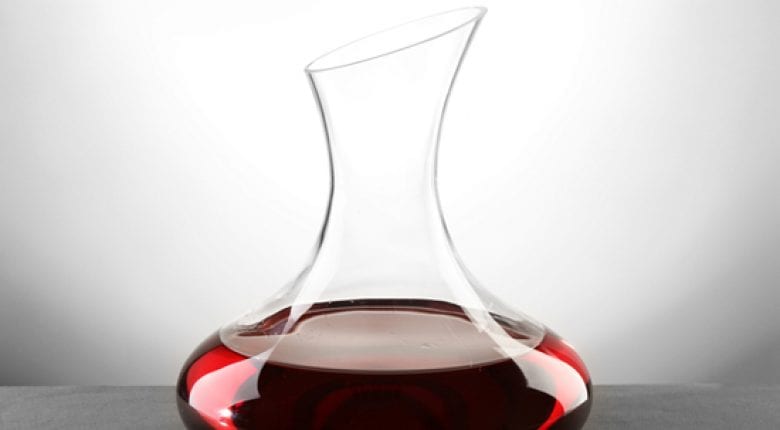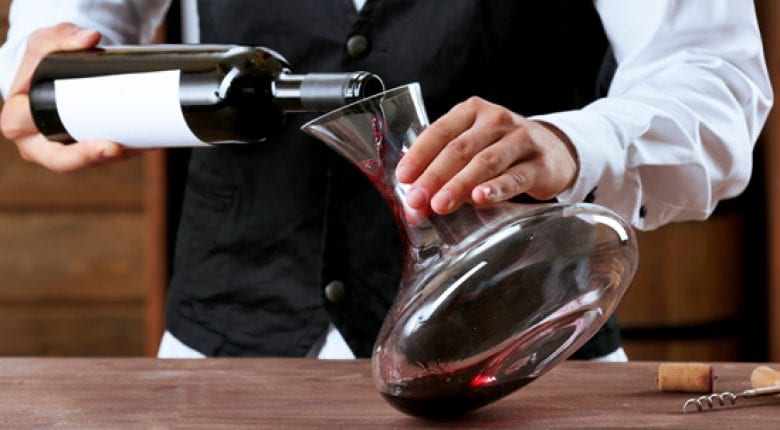A top quality crystal glass carafe is a must-have for the wine connoisseur. Just why decanting wine into a carafe is so important, and the best way to clean these majestic vessels is explained by Liebherr wine expert Frank Kämmer.
Anyone who uses a carafe to serve and enjoy their wine will, at some point, be confronted with a problem: despite careful rinsing after use, the glass of the carafe will eventually begin to show signs of cloudiness and acquire deposits from the wine. Many carafes have a narrow neck and so can only be mechanically cleaned to a very limited extent (if at all) with the aid of a bottle brush. However, experienced sommeliers have a trick up their sleeve, so take note: calcium and deposited residues inside the carafe are best removed by filling it with warm water and adding 1-2 denture cleaning tablets. Leave it to stand overnight and then rinse it well – several times – and your carafe will, once again, look like it did the first time you used it!
For red wines, decanting into a carafe is a must
Especially for high quality red wines, decanting – by which we mean the careful pouring a wine into a carafe – is an absolute must. There are three reasons for this:
1. As the result of the oxygenation that takes place, a young wine becomes more rounded and mature as the astringency of its tannins softens.
2. Aged red wines sometimes have sediment, or ‘depot’, in the bottle. With careful pouring, these deposits can be left behind in the bottle, and you can enjoy a clear wine from the carafe.
3. Very old wines can sometimes taste somewhat dull or even musty shortly after opening. This is where oxygenation can help the wine to develop its bouquet and, in some cases, allow disruptive substances, such as volatile acetic acid, to evaporate and escape.
Furthermore, it’s worth noting that many characterful white wines also benefit from being left to breathe in a wine carafe.

If you enjoyed this post, make sure you subscribe to our newsletter, so that you can keep up-to-date with all the news from Liebherr’s world of refrigeration and food freshness. Or, if you have any questions or comments about what you’ve read, please get in touch with us! Simply use the comment function below this post or join in a discussion with us on Facebook.
